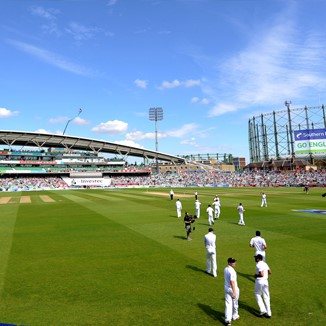Information
-
Document No.
-
Audit Title
-
Client / Site
-
Conducted on
-
Prepared by
-
Location
-
Personnel
Electrical
-
Are tool cords in good condition?
-
Recommendation is to correctly repair or replace the tool cord. 1910.334(a)(2)(I)
-
Are circuit breaker panels accessible and not blocked for 3 feet in front of the panel?
Tap to enter information
-
Recommendation is to ensure that access to the circuit breaker panel is not blocked. 1910.303(g)(1)(I)(A)
-
Are outdoor electrical components protected from weather damage?
Tap to enter information
-
Recommendation is to install a cover or relocate the electrical components to protect them from weather damage. 1910.303(g)(1)(vii)(B)
-
Are outdoor components protected by GFCI?
Tap to enter information
-
Recommendation is to install a GFCI to prevent accidental electric shock. 1910.305(j)(2)(v)
-
Are extension cords in good condition?<br>
Tap to enter information
-
Recommendation is to correctly repair or replace the damaged extension cord. 1910.303(b)(1)
-
Are circuit breaker box knockouts intact?
Tap to enter information
-
Recommendation is to install a knockout plug. 1910.303(b)(7)(I)
-
Are breakers missing in the circuit breaker panel?
Tap to enter information
-
Recommendation is to install blanks in the open spaces from the missing breakers. 1910.303(b)(7)(I)
-
Is there a cover on junction boxes?
Tap to enter information
-
Recommendation is to ensure that covers are installed on electrical junction boxes. 1910.305(b)(2)(I)
-
Are face plates installed on outlets and switches?
Tap to enter information
-
Recommendation is to install a face plate on the electrical outlet or switch. 1910.305(b)(2)(I)
-
Electrical equipment is designed for the class and division of the location?
Tap to enter information
-
Recommendation is to install electrical equipment that complies with the requirements of the class and division. 1910.307(c)(2)(I)
-
Are flexible cords being used as permanent wiring?
Tap to enter information
-
Recommendation is to discontinue the use of flexible cords as permanent wiring. 1910.305(g)(1)(iv)(A)
-
Is electrical conduit in good condition?
Tap to enter information
-
Recommendation is to repair or replace the damaged conduit. 1910.303(b)(1)(ii)
-
Are high voltage panels secured?
Tap to enter information
-
Recommendation is to secure the high voltage panel. 1910.303(g)(1)(vii)(B)
-
Are outlets within 6 ft of a sink or water source protected by GFCI?
Tap to enter information
-
Recommendation is to protect outlets within 6 ft of sinks or water sources with GFCI. NFPA Section 210.8(B)(5)
Fixed Ladders
-
Are fixed ladders in good condition?
Tap to enter information
-
Recommendation is to replace the ladder.
-
Are ladders longer than 20 ft in length protected by a cage or other suitable fall protection?
Tap to enter information
-
Recommendation is to fabricate and install a cage or other suitable fall protection device.
-
Are ladder cages started 7 to 8 ft from the ground?
Tap to enter information
-
Recommendation is to fabricate and install a cage that meets requirements.
-
Do ladder cages extend 42" above the surface being accessed?
Tap to enter information
-
Recommendation is to fabricate and install a cage that meets requirements.
-
Are there obstructions in the climbing path of the ladder?
Tap to enter information
-
Recommendation is to remove obstructions from the climbing path or build an offset in the ladder.
Extension Ladders
-
Are ladders having defects taken out of service?
-
Recommendation is to remove all ladders having defects from service until they can be repaired or disposed of properly.
-
Are ladders tied off or held by an attendant?
-
Are ladder rungs free from oil and grease?
-
Are both sections of the extension ladder used together?
-
Are there missing feet on the extension ladder?
Step Ladders
-
Are step ladders in good condition and not modified outside of manufacturers specifications?
-
Are step ladders the appropriate type and rating?
-
Are step ladders being used correctly?
Compressed Gases
-
Are flammable gases and oxygen cylinders stored correctly?
-
Are containers labeled and identified?
-
Are caps on cylinders that are not in use?<br>
-
Are storage locations identified and marked?<br><br>
Machine Guarding
-
Are in running pinch points protected?
-
Are spinning or rotating parts protected?<br>
-
Are bench grinder guards adjusted to the appropriate distance from the grinding wheel?
-
Are guards installed on angle grinders?
-
Are guards the appropriate size to protect employees from reaching the point of operation?
Working and Walking Surfaces
-
Are there unprotected or unguarded floor holes?
-
Are there open or unguarded wall openings?
-
Are there slick or uneven floors?
-
Is the floor material able to support the weight of the load it must support?
Fire Extinguishers
-
Do fire extinguishers have annual inspections?<br>
-
Are fire extinguishers inspected monthly?
-
Is access to the fire extinguisher blocked?
Means of Egress
-
Is the means of egress door identified and labeled?
-
Is access to the egress door blocked?
Flammable and Combustible Liquid Storage
-
Are flammable and combustible liquids stored in correct containers?
-
Are parts baths labeled either "No Smoking" or "Combustible Liquid"?
-
Are propane cylinders stored in excess inside?
Propane
-
Are propane bulkheads labeled appropriately?
-
Are propane tanks labeled appropriately?
-
Are tires on propane delivery bobtail chocked?
-
Are propane cylinders stored correctly?
-
Are first stage regulators protected from damage?
Stairs
-
Do stairs with 4 or more risers have a handrail?
-
Are stair risers and treads uniform?
-
Are stairs made of appropriate materials and strength?<br>
Fall Protection
-
Are working or walking surfaces 4 ft or higher off of the ground protected?<br>
-
Are guardrails complete, of the appropriate construction and meets requirements?
-
Are personal fall arrest systems in use?
-
Have employees been trained on the proper use of PFAS?
-
Is the PFAS equipment in good condition?
-
Do anchor points meet the requirements?
Anhydrous Ammonia
-
Are tanks labeled correctly?
-
Are bulkheads labeled correctly?
-
Is the piping color coded and a key in place?
-
Are emergency water tanks filled to 150 gallon capacity and clean?
-
Are caps on hydrostats?
-
Are riser hoses within remove by date?
-
Is appropriate P.P.E. available and used?
-
Are emergency respirators available and within date?<br>
-
Are emergency contacts up to date?
-
Are nurse tanks in good condition and inspected?<br>
-
Are flex hoses in good condition and not at extreme angles?
Emergency Planning and Equipment
-
Is the Emergency Action Plan posted and employees trained?
-
Are emergency eye wash stations available?
-
Are emergency eye wash stations blocked?
Respirators
-
Are respirators the right type for the application?
-
Have employees been trained on the use of respirators?
-
Are employees medically qualified to wear a respirator?<br>
-
Are respirators maintained and stored correctly?












